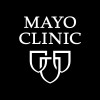
Thoracic Splanchnic Magnetic Neuromodulation Therapy (ThorS-MagNT) for Grade 3 Diabetic Gastroparesis:...
Diabetic GastroparesisDiabetic gastroparesis (DG) is an under recognized and significant complication of diabetes with lack of effective treatments. Recently, a 4-fold increase in hospitalizations has been seen in DG patients with refractory symptoms, defined as Grade 3 gastroparesis. A critical barrier to progress has been both a lack of pathophysiological understanding of DG and absence of effective treatments. Diabetic autonomic neuropathy is felt to be a key dysfunction in DG that causes gastric atony and segmental hypomotility of the small intestine. Autonomic testing of DG patients reveals significant sympathetic hypofunction, a feature distinguishing DG from diabetics with normal gastric emptying. Therefore, stimulation of the thoracic dorsal roots of the greater splanchnic nerve (sympathetic stimulation) could enhance gastric motility, as observed in animal models, and improve DG. Investigators have developed a novel, safe, noninvasive peripheral nerve treatment using repetitive magnetic stimulation, and have demonstrated improvement in fecal incontinence with neuropathy. The goal of this study is to build on our expertise to conduct a pilot, feasibility study by examining the effect of Thoracic Splanchnic Magnetic Neuromodulation Therapy (ThorS-MagNT) in patients with Grade 3 DG. The aims are to evaluate the safety, effectiveness and feasibility of ThorS-MagNT in patients with Grade 3 DG and to evaluate predictive factors of treatment. The central hypothesis is that ThorS-MagNT will improve sympathetic hypofunction, gastric motility, and spino-gut interactions, and thereby, improve symptoms of DG. ThorS-MagNT will be performed in 12 patients hospitalized with severe DG by using low-frequency, low-intensity repetitive magnetic stimulation, bilaterally, around T7 intravertebral space, twice a day for 5 days, with a total 1200 magnetic stimulations per treatment session at 1 Hz. The primary outcome is responder rate, defined as ≥20% reduction in the Gastroparesis Cardinal Symptom Index-daily diary (ANMS GCSI-DD) score. Secondary outcomes include subscores of the ANMS GSCI-DD, effects on gastric emptying time, Patient Global Impression of Improvement (PGI-I), safety, and tolerability. The impact of this work is to develop a novel, safe, and non-invasive treatment for severe DG that could result in a paradigm shift in management of DG.

Idiopathic Gastroparesis Registry Using a Predominant-Symptom Classification
GastroparesisThe diagnosis of "gastroparesis" suggests that delayed gastric emptying is the underlying cause of symptoms, but this description fails to explain the variable presentation. There are fundamental differences in causes, symptoms, and prognosis among patients with idiopathic gastroparesis. Understanding these differences is necessary in order to provide effective treatment in these patients. We believe our classification for gastroparesis is a useful tool in the management of patients with idiopathic gastroparesis to predict clinical severity, treatment response, and future prognosis.

ABCA2 GIRMS Analytical Validation Clinical Performance Study
GastroparesisThe purpose of this study is to collect human breath samples for use in a validation study intended to demonstrate equivalent clinical performance measures of new ABCA2 GIRMS (Automated Breath Carbon Analyzer-2 Gas Isotope Ratio Mass Spectrometer) instruments to the currently FDA-approved ABCA GIRMS (Automated Breath Carbon Analyzer Gas Isotope Ratio Mass Spectrometer) system. ABCA GIRMS systems are used to analyze the ratio of 13CO2 to 12CO2 in patient breath samples during the GEBT (Gastric Emptying Breath Test) procedure.

PET Imaging to Delineate Macrophage Activation in Diabetic Gastroparesis
DiabetesGastroparesis With Diabetes MellitusMacrophage-driven immune dysregulation has been shown to be involved in pathophysiology of diabetic gastroparesis. Currently, there are no non-invasive ways to study macrophage activation in humans. The researchers are trying to determine the utility of 11C-ER176 based PET-CT scanning to determine pro-inflammatory macrophage activation in gastric wall of patients with diabetic gastroparesis.

Reconstruction Method and Delayed Gastric Emptying After Pancreatic Surgery
Pancreatic CancerSurgery1 morePancreaticoduodenectomy (whipple procedure) is the standard operation for tumors of the pancreatic head, uncinate process, distal common bile duct as well as the papilla of vater. For reconstruction, pylorus-preservation (PPPD) has been shown to be technically and oncologically equivalent to the traditional whipple operation. One issue with this technique is delayed gastric emptying (DGE), which occurs in 25-70% of patients, usually emerging between day 4 and 14 after surgery. Patients with severe DGE can not only experience prolonged length of hospital stay, but are also at increased risk for other complications like aspiration or other issues related to the inability to ingest nutrition. There is vast retrospective evidence and one prospective study indicating that antecolic reconstruction of the duodenojejunostomy can improve the rate and severity of delayed gastric emptying. The investigators have conducted a prospective randomized trial in order to test this hypothesis. Patients were randomized to either undergo antecolic or retrocolic reconstruction after PPPD. On day 10 after surgery, DGE was assessed by clinical criteria. In addition, a test meal including 1g paracetamol was administered to check for clinically inapparent DGE. Of these serum samples, kinetics of intestinal peptides like GLP-1, PYY and glucagon was alos measured.

Impact of Braun Anastomosis on Reduction in Delayed Gastric Emptying Following Pancreaticoduodenectomy...
Periampullary Pathology Requiring PancreaticoduodenectomyPylorus preserving pancreaticoduodenectomy (PPPD) has been considered as only curative treatment modality for periampullary tumor. High mortality rates after PPPD have been reduced down to 1%. However, postoperative morbidities are still reported around 10 to 20 % even in high volume centers.The delayed gastric emptying syndrome(DGE) is one of major complications after PPPD. Many randomized control studies reported that pylorus preserving method was not related to the occurence of DGE. Thus,we assumed that large amount of biliary and pancreatic juice might affect DGE. With the aim to prove that the use of Braun anastomosis after PPPD can prevent DGE, the investigators started the recruitment of patients with a periampullary tumors to this clinical trial from february 2013 with the study hypothesis that patients with Braun anastomosis had less DGE than those who only got conventional PPPD. The investigators have calculated the number of patients necessaries to have statistical significant differences in 60 patients with a rate DGE expected to be higher than 30%. The study include all the patients that usually arrive to our surgery department and who are indicated to PPPD for the curative treatment of periampullary tumor. The study is randomized, double blind where the investigators and the patients do not know if the patients are in the Braun anastomosis group or not, and prospectively analyzed. All the clinical and laboratory or radiographic finds relative to the occurrence of DGE are recorded.

Determination of the Characteristics of Isometric Gastric Motility Measurement in Healthy Volunteers...
GastroparesisThere is a clear need for a novel method that can readily assess gastric motility in daily clinical practice. Isometric determination of the stomach motility would avoid the use of a large flaccid balloon while still being affordable. The aim of this study was to determine the optimal balloon characteristics that enable to measure motility-induced pressure changes in healthy volunteers.

Study to Assess the Efficacy of VLY-686 in Relieving Symptoms of Gastroparesis
GastroparesisThis is a multicenter, randomized, double-blind, placebo-controlled study to be conducted in the United States. One hundred fifty (150) subjects diagnosed with gastroparesis, who satisfy the selection criteria for the study, will be randomized to one of two treatment groups, active or placebo.

GEBT Lot-to-Lot and Biological Variability
GastroparesisThe purpose of this study is to collect information regarding lot-to-lot variability in 13C-Spirulina test meal lets and within-subject biological variability.

The Effect of Gluten-free Diet in Type 1 Diabetics With Dyspepsia Symptoms
Diabetes MellitusType 13 morePatients with type-1 diabetes are more susceptible to motility-related upper gastrointestinal symptoms. Dietary interventions are one of the treatment pillars for these symptoms. Many gastrointestinal conditions other than celiac disease, are being increasingly treated with gluten-free diet (GFD). The role of GFD in non-celiac type-1 diabetic patients with dyspepsia-like symptoms has not been assessed before. In this study, type 1 diabetes patients with concomitant upper gastrointestinal symptoms will be asked to follow a 1-month GFD to assess changes in upper gastrointestinal symptoms and gastroduodenal motility before and after the dietary intervention.
